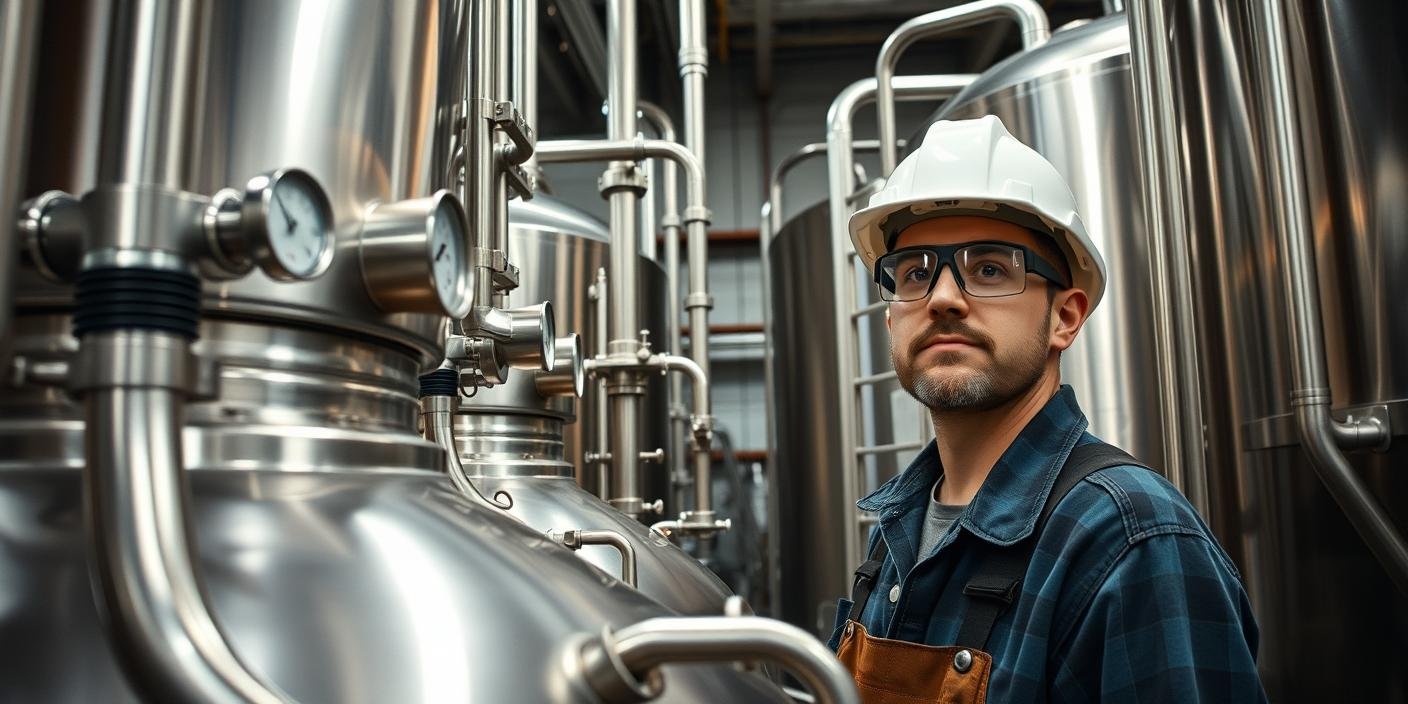Dr GH Thanki, Director and Principal Consultant Corrosion Control and Monitoring Consultancy, discusses the storage of stainless-steel fabricated vessels for industrial use, in the concluding part of his article.
Proper storage of stainless-steel fabricated vessels for industrial use is crucial to maintain their quality, prevent damage and ensure they remain in good condition until installation or use.
Here are some precautions and special care considerations:
1. Dry storage: Store vessels in a dry, well-ventilated area to prevent moisture accumulation and corrosion.
2. Protect from contamination: Cover vessels with breathable materials (e.g., polyethylene or canvas) to prevent dust, dirt and other contaminants from settling on the surface.
3. Avoid direct sunlight: Store vessels away from direct sunlight, which can cause UV damage, discoloration or degradation of surface finishes.
4. Support and stabilisation: Ensure vessels are properly supported and stabilised to prevent damage from movement, vibration or collapse.
5. Handling and lifting: Use proper lifting techniques and equipment to avoid scratching, denting or damaging the vessels during storage or transportation.
6. Separation from other materials: Store stainless steel vessels separately from carbon steel or other materials to prevent cross-contamination and corrosion.
7. Identification and labelling: Clearly label and identify stored vessels with their contents, grade and other relevant information.
8. Regular inspection: Regularly inspect stored vessels for signs of damage, corrosion or deterioration.
9. Maintenance of surface finish: Maintain the surface finish by periodically cleaning and passivating the vessels, if necessary.
10. Documentation: Keep records of storage conditions, inspections and maintenance activities.
Additional considerations for specific environments:
1. Outdoor storage: Use UV-resistant covers and consider applying a protective coating or wax to prevent corrosion.
2. High-humidity environments: Use desiccants or dehumidification systems to maintain a dry environment.
3. Coastal or high-salt environments: Take extra precautions to prevent corrosion, such as using corrosion-resistant coatings or storing vessels in a controlled environment.
By following these guidelines, you can ensure the stainless-steel fabricated vessels remain in good condition, maintain their corrosion-resistant properties and are ready for installation or use when needed.
Precautions in welding and forming
Stainless steel fabrication for industrial use requires careful consideration of welding and forming processes to maintain the material’s corrosion-resistant properties.
Here are some precautions to be taken:
Welding Precautions
1. Cleanliness: Ensure the work area and materials are free from dirt, oil and grease.
2. Shielding gases: Use inert gases like argon or helium to prevent atmospheric contamination.
3. Filler materials: Select compatible stainless-steel fillers to maintain corrosion resistance.
4. Heat input control: Monitor heat input to prevent overheating, which can lead to sensitisation (chromium carbide precipitation).
5. Interpass temperature control: Keep Interpass temperatures below 200°C to prevent overheating.
6. Post-weld cleaning: Clean welds thoroughly to remove slag, flux and oxides.
Forming precautions
1. Avoid over-working: Minimise forming operations to prevent excessive strain hardening.
2. Use appropriate lubricants: Apply lubricants compatible with stainless steel to prevent galling and scratching.
3. Avoid crevices: Design and form parts to avoid crevices where moisture can accumulate.
4. Radius and corner control: Maintain smooth radii and corners to prevent stress concentrations.
5. Annealing: Consider annealing (heat treatment) after forming to restore ductility and corrosion resistance.
6. Passivation: Perform passivation (chemical treatment) after fabrication to restore the corrosion-resistant surface layer.
Additional considerations
1. Material selection: Choose the appropriate stainless steel grade for the intended application.
2. Design for fabrication: Design parts with fabrication in mind to minimise complexities and potential issues.
3. Operator training: Ensure fabricators are trained in stainless steel handling, welding and forming techniques.
4. Quality control: Implement quality control measures to detect and address potential issues early in the fabrication process.
By following these precautions, you can ensure the successful fabrication of stainless-steel components for industrial use, maintaining their corrosion-resistant properties and overall performance.
About the author: Dr GH Thanki is the former UPL Corrosion Management Advisor; Director and Principal Consultant
Corrosion Control and Monitoring Consultancy; and Principal Corrosion Management Consultant, CorroSafe Consultant.





